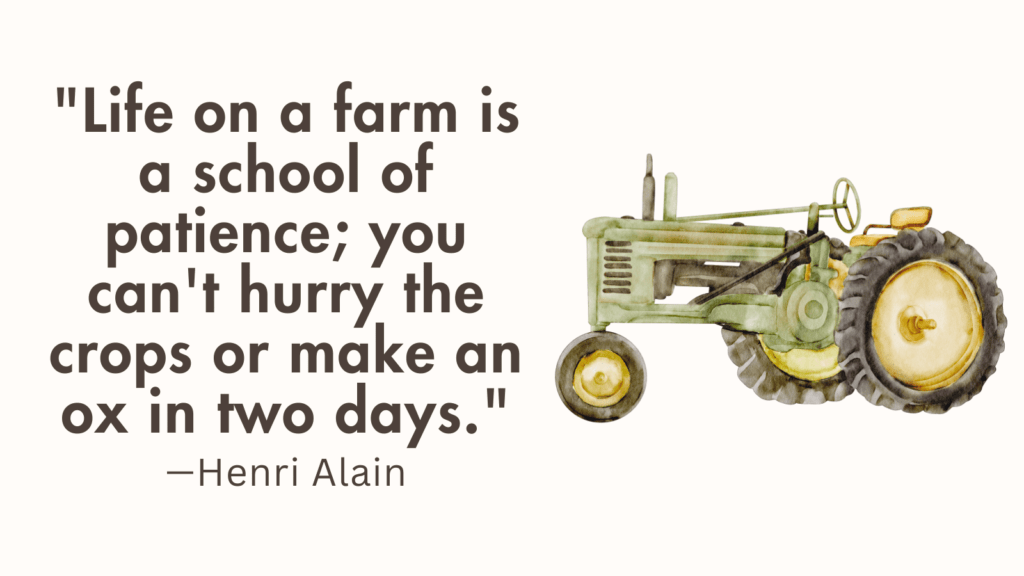In this post, you’re going to learn all about straight run chicken.
What Is Straight Run Chicken?
Straight run chickens refer to a mix of male and female chicks that have not been sexed or sorted by gender.
When hatching chicks, the sex of the chicks cannot be determined until they start to develop secondary sexual characteristics, usually around 6-10 weeks of age.
Straight run chicks provide a random assortment of males (cockerels) and females (pullets) in equal proportions.
When raising straight run chickens, it is important to note that there is a possibility of ending up with unwanted roosters.
This may be a concern for individuals who live in areas with restrictions on keeping roosters or for those who prefer to only raise hens for egg production.
However, raising straight run chickens can also be advantageous for individuals interested in breeding, meat production, or simply want a diverse flock.
Straight run chickens require similar care and management as sexed chicks.
One aspect to consider when raising straight run chickens is the need to manage excess roosters if they are not desired.
This can involve finding new homes for the roosters, trading them with other chicken keepers, or processing them for meat.
Local regulations and personal preferences will guide the decision-making process concerning managing roosters.
Related: How to Raise Prairie Bluebell Eggers?
Differences Between Straight Run, Pullets, And Cockerels
Straight run, pullets, and cockerels are terms used to describe different categories of chickens based on their gender and age.
Straight run refers to a mix of male and female chicks that have not been sexed or sorted after hatching.
When purchasing straight run chicks, you will receive a combination of both male and female chicks.
Pullets are young female chickens that have not yet reached maturity.
They are typically between the ages of 4 to 6 months old.
Cockerels are young male chickens that have not yet reached maturity.
Like pullets, they are typically between the ages of 4 to 6 months old.
Pros And Cons Of Raising Straight Run Chickens
Raising straight run chickens, a mix of male and female chicks, is a common practice in poultry farming.
While it has its advantages and disadvantages, it ultimately depends on your specific goals, resources, and tolerance for unpredictability.
In this article, we will explore the pros and cons of raising straight run chickens in more detail.
Pros:
1. Genetic Diversity
When you raise both males and females, you introduce a wider range of genes into your flock.
This can be beneficial if you are interested in breeding your chickens or want to maintain a diverse and healthy flock.
Genetic diversity helps improve the overall resilience and adaptability of your birds, making them better equipped to handle changes in their environment and immune system challenges.
Related: How to Care for Mohawk Chicken’s Crest?
2. Cost Savings
In many cases, straight run chicks are more affordable than sexed chicks that are specifically sorted by gender.
If you are on a budget or have cost constraints, choosing straight run chicks can save you money.
However, it is important to consider that the long-term costs associated with managing unwanted roosters should be factored in when considering the cost-effectiveness of raising straight run chickens.
3. Future Breeding Potential
If you are interested in establishing your own breeding program or maintaining a self-sustaining flock, straight run chicks allow you to have more control over the traits, health, and productivity of your birds.
By carefully selecting the best individuals from each generation, you can gradually improve the overall quality of your flock over time.
Related: How To Keep Chickens Out Of Garden?
4. Ethical Considerations
For some people, raising straight run chickens aligns with their ethical values.
In commercial hatcheries that primarily supply sexed chicks, male chicks are often culled shortly after hatching because they do not lay eggs and are not suitable for meat production.
By raising straight run chickens instead, you are helping to prevent unnecessary culling and contributing to a more humane approach to poultry farming.
This can be particularly important to individuals who prioritize animal welfare.
Cons:
1. Unwanted Roosters
One significant drawback of raising straight run chickens is the possibility of ending up with more roosters than desired.
This can be problematic in urban or suburban settings where roosters are not allowed due to noise restrictions.
Additionally, managing multiple roosters in a small flock can lead to aggression and territorial conflicts.
It is essential to have a plan in place for dealing with excess roosters, such as rehoming them, trading with other farmers, or processing them for meat if that aligns with your goals and local regulations.
Related: Will Chickens Stop Laying If Coop Is Dirty? [Raising Chickens Complete Guide]
2. Limited Egg Production
While both male and female chickens contribute to the overall health and dynamics of your flock, only the pullets (young female chickens) will lay eggs.
With straight run chickens, there is no guarantee of a high egg production rate since you have both males and females.
This can be a disadvantage if your primary goal is to maximize egg production and you are not interested in breeding your chickens.
3. Extra Effort and Space Requirements
Raising straight run chicks requires additional resources and efforts compared to raising sexed chicks.
Once the chickens reach sexual maturity, you will need separate living quarters for male and female chickens.
This will demand more space, time, and financial investment to accommodate the growing number of roosters and pullets separately.
Overcrowding can result in stress, reduced productivity, and increased risk of diseases spreading within the flock.
Therefore, it is crucial to provide adequate space and proper management to ensure the well-being and optimal development of your birds.
Related: Can Goats Eat Watermelon?
How to Raise Straight Run Chickens?
Raising straight run chickens, a mix of male and female chicks, can be an exciting and rewarding experience.
However, there are a few important considerations and steps to follow to ensure the health and success of your flock.
1. Selecting Chicks
When choosing straight run chicks, it is essential to source them from reputable hatcheries or breeders.
Look for breeders who prioritize the health and well-being of their birds and provide accurate information regarding the breed, parentage, and expected traits.
2. Providing Optimal Housing
To raise straight run chickens, you need to ensure they have appropriate housing that meets their needs.
Provide a well-insulated coop or brooder with adequate ventilation, protection from predators, and sufficient space for the growing chicks.
The space requirements will increase as the chickens mature, so plan accordingly.
Related: How To Start Farming With No Money?
3. Feeding and Nutrition
Chicks require a well-balanced diet to grow into healthy adult birds.
Start by providing them with a commercially available starter feed specifically formulated for chicks.
This feed is high in protein and contains essential nutrients like vitamins and minerals needed for growth and development.
Gradually transition to a grower feed when the chicks are around eight weeks old.
Monitor their growth and adjust the feeding amounts accordingly to prevent under or overfeeding.
4. Water Supply
Access to clean and fresh water is crucial for the well-being of your straight run chickens.
Provide waterers that are easily accessible and regularly clean and refill them to ensure hydration.
Consider using nipple waterers or automatic water systems to minimize spillage and contamination.
Related: What’s The Difference Between A Farm And A Ranch?
5. Heat Requirements
During the first few weeks after hatching, chicks require supplemental heat to maintain their body temperature.
Ensure that the brooder temperature is around 95°F (35°C) initially and gradually decrease it by five degrees each week until reaching the ambient temperature.
Use heat lamps or brooders to create a warm and comfortable environment for the chicks.
6. Socialization and Flock Integration
Socialization is crucial for straight run chicks to develop healthy and harmonious behavior.
Introduce them to different environments, sounds, and stimuli to help them adapt to various situations.
It is also important to gradually introduce them to the rest of your flock to avoid aggression and territorial conflicts.
Observe their interactions closely and intervene if necessary.
Related: Does Contour Farming Work Everywhere?
7. Managing Unwanted Roosters
With straight run chickens, there is a possibility of ending up with more roosters than desired.
If you live in an area where roosters are not allowed or if you have limited space, you will need to manage the excess roosters.
Consider rehoming them, trading with other farmers, or processing them for meat if that aligns with your goals and local regulations.
8. Preventing Disease and Parasites
Maintaining good biosecurity practices is crucial to prevent the spread of diseases and parasites within your flock.
Keep the coop clean and dry, regularly remove droppings, and provide proper ventilation.
Quarantine new birds before introducing them to your existing flock to minimize the risk of introducing diseases.
Additionally, monitor your chickens for signs of illness and consult with a veterinarian if you notice any abnormalities.
9. Continue Learning and Observation
As a poultry farmer, it is vital to continue learning and observing your straight run chickens.
Pay attention to their behavior, feed consumption, egg production (if applicable), and overall health.
This information can help you make informed decisions about their care and management.
Related: Why Do You Plant Rosemary By Your Garden Gate?
Conclusion
Raising straight run chickens requires attention to detail and a commitment to providing optimal care.
By selecting healthy chicks, providing proper housing, nutrition, water, and socialization, managing unwanted roosters, preventing diseases and parasites, and continually learning and observing your flock, you can ensure a successful and fulfilling experience.
Remember, each flock is unique, and adjustments may be necessary based on your specific circumstances and goals.
FAQ
Can I determine the gender of straight run chickens when they are chicks?
No, the gender of straight run chickens cannot be determined at the chick stage.
It becomes apparent as they develop secondary sexual characteristics, usually around 6-10 weeks of age.
Are there any behavioral differences between hens and roosters?
Yes, roosters tend to exhibit more aggressive behavior than hens, especially during breeding season.
They may become protective of their flock, crow loudly, and engage in territorial disputes.
Observing proper handling and socialization techniques is crucial when raising roosters.
Related: Garden Tool Box [Complete Guide + Resources]
Is there a difference in egg-laying capacity between hens and pullets from straight run chickens?
Pullets from straight run chickens have the same potential for egg-laying as sexed female chicks.
However, it’s important to note that individual genetics, breed variations, diet, and other factors can influence egg production.
Can I use straight run chickens for meat production?
Absolutely! Straight run chickens can be raised for meat just like sexed chicks.
Roosters are generally preferred for meat production due to their larger size and meat quality.
If raising chickens specifically for meat, it may be more efficient to select specialized meat breeds or hybrids.
Related: Can Horses Eat Clover?

Garden Cart
*As an Amazon Associate I earn from qualifying purchases, at zero cost to you, if you click through the link and finalize a purchase.





